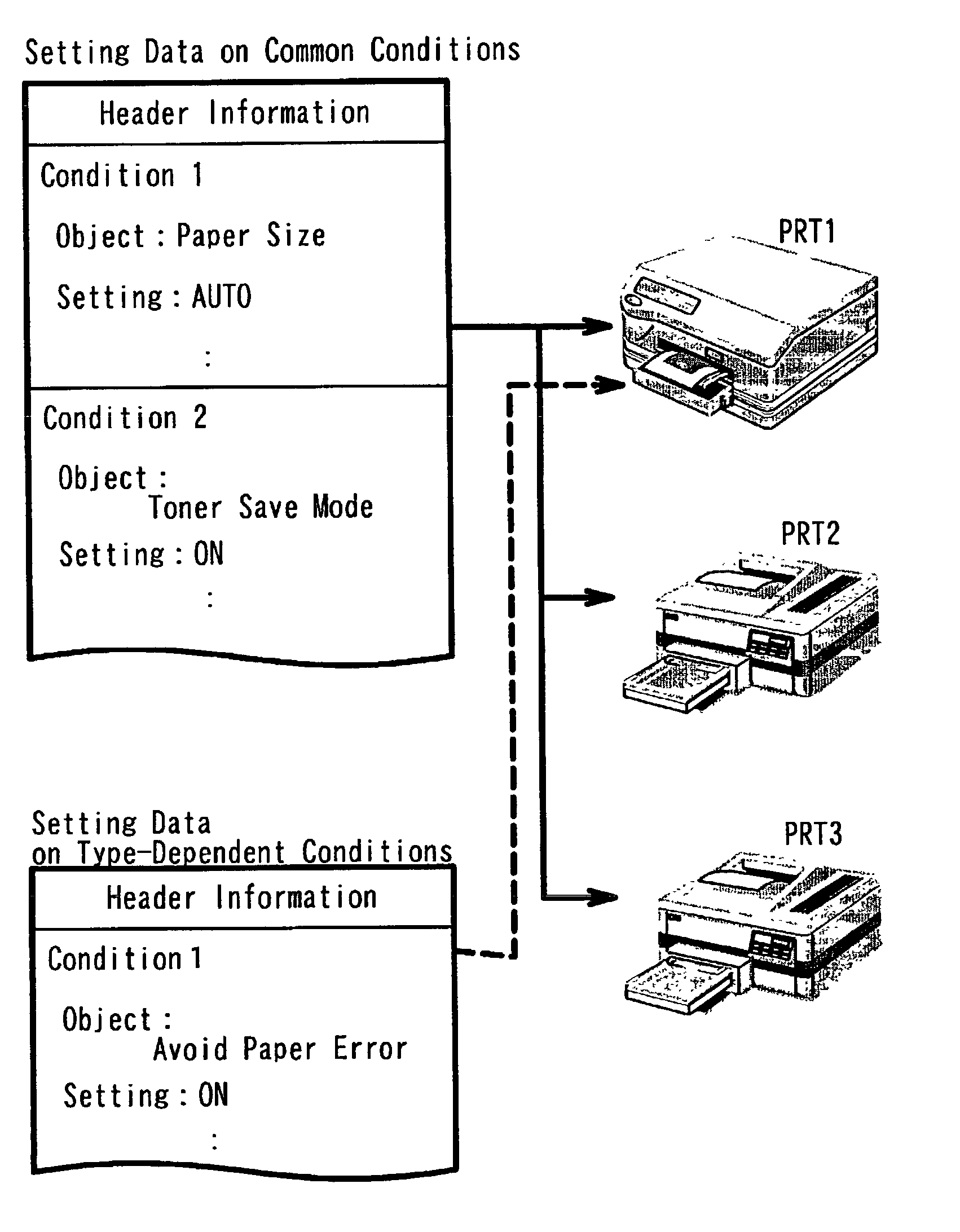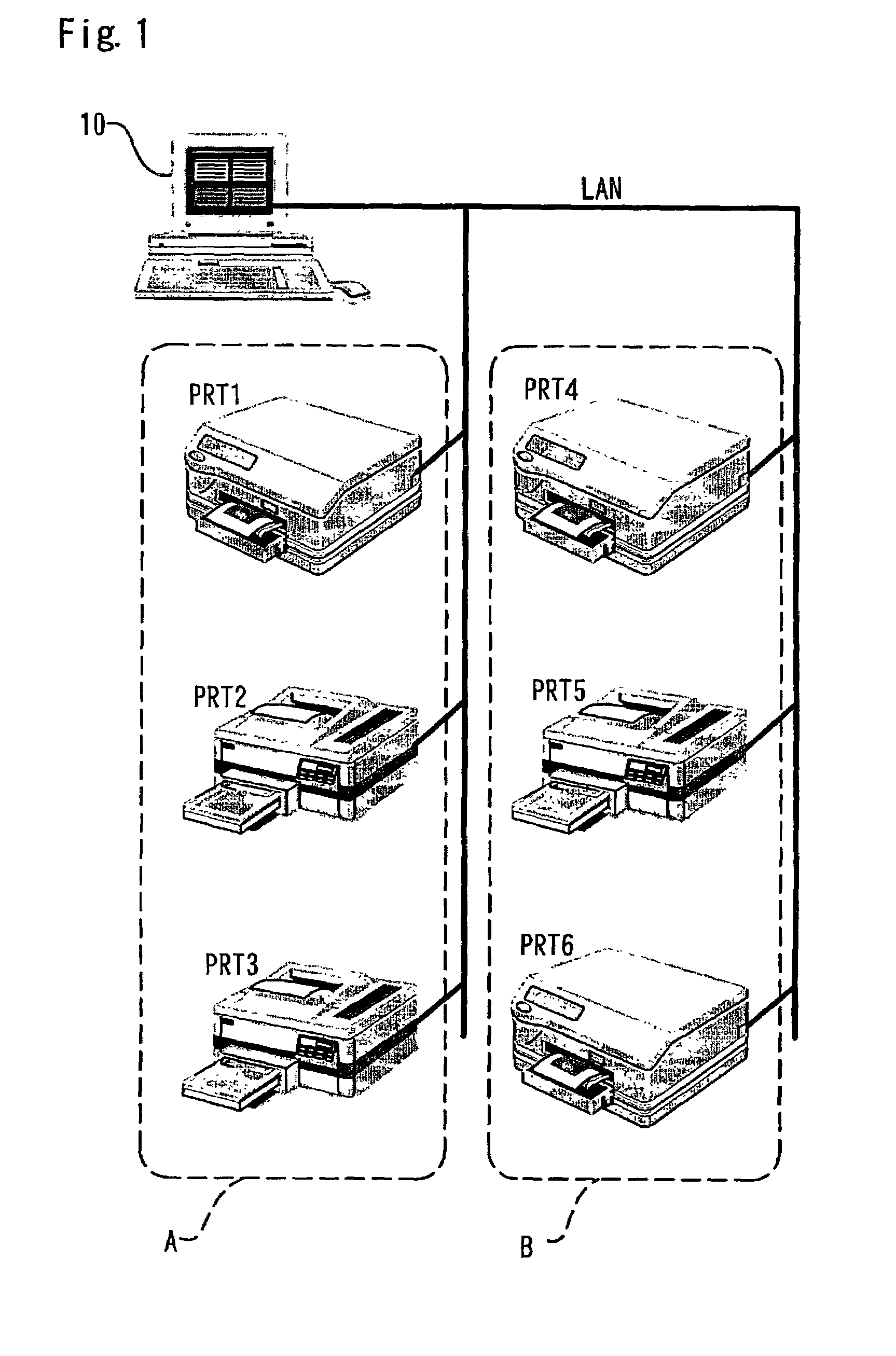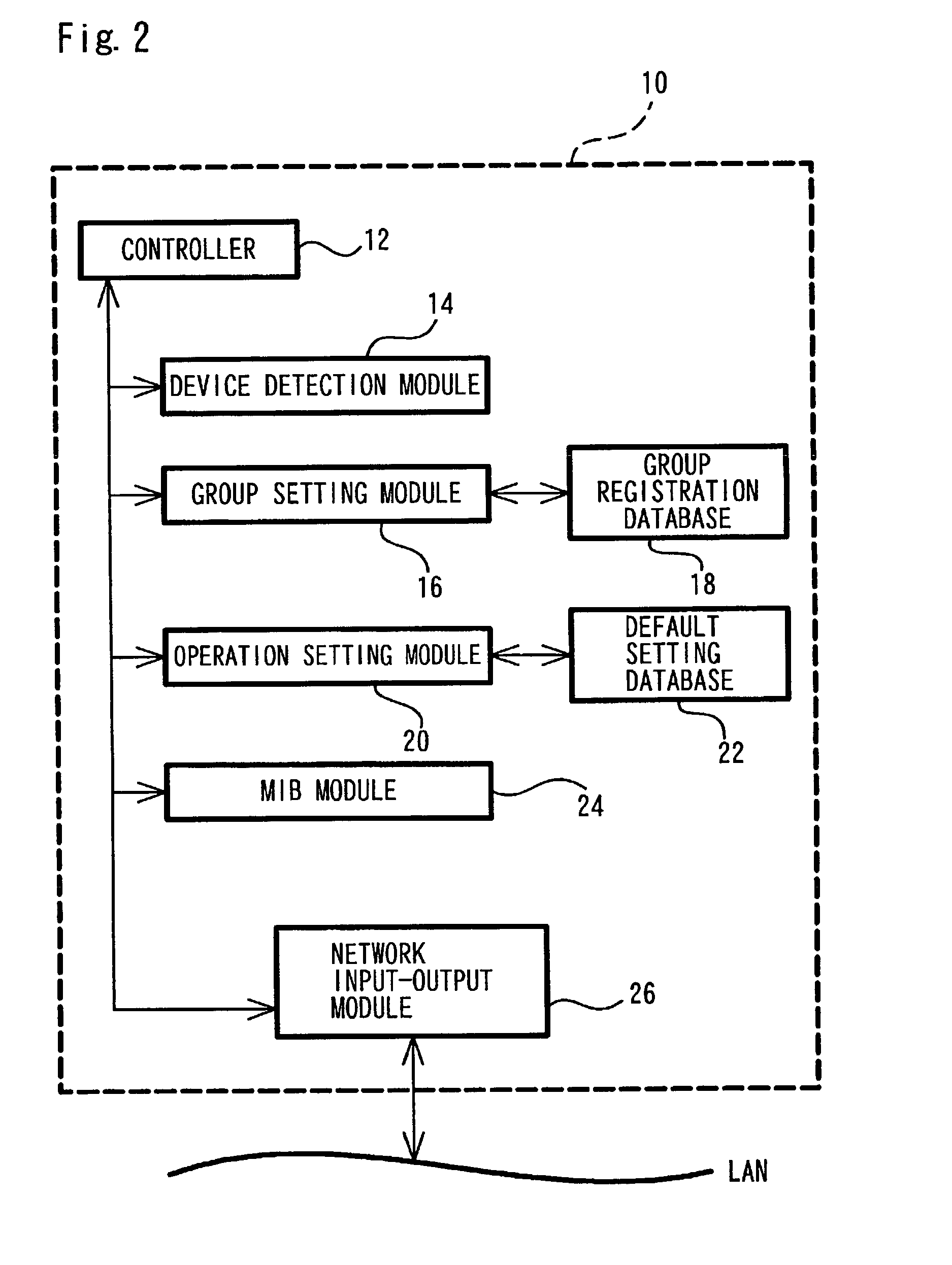Management system for devices connecting with network
a management system and network technology, applied in the direction of digital output to print units, electric controllers, instruments, etc., can solve the problems of affecting the management of work conditions, and affecting the quality of work, so as to relieve the burden of managing working conditions
- Summary
- Abstract
- Description
- Claims
- Application Information
AI Technical Summary
Benefits of technology
Problems solved by technology
Method used
Image
Examples
second embodiment
D. Second Embodiment
[0092]The first embodiment regards the management system that collectively sets the working conditions of the multiple printers. A second embodiment regards a system that maintains the working conditions as well as collectively sets the working conditions.
[0093]The management system 10 of the second embodiment has the identical hardware structure and functional block configuration with those of the first embodiment. Like the first embodiment, the procedure of the second embodiment collectively sets the working conditions of the respective printers according to the operation setting process (see FIGS. 5 and 8). The difference from the first embodiment is that the procedure of the second embodiment maintains the preset working conditions according to a series of processing discussed below.
[0094]FIG. 9 is a flowchart showing a settings maintenance routine carried out in the second embodiment. When the program enters the settings maintaining routine, the management s...
third embodiment
E. Third Embodiment
[0098]The first embodiment and the second embodiment regard the procedure of setting the working conditions of the printers. The management system may specify diverse devices other than the printers as objects of management. A third embodiment specifies displays usable on a network as objects of management.
[0099]FIG. 10 illustrates the configuration of a network system including a management system 10A in the third embodiment. As illustrated, displays usable on a network (hereinafter referred to as the ‘network displays’) ND1, ND2, and ND3 are connected to a network LAN. The network displays are capable of displaying various pieces of information supplied via the network. In the structure of the third embodiment, each of the network displays can display HTML data, which is supplied from a Web server WSV connecting with the network LAN, by a browser. The network LAN is further connected to the Internet via a proxy server PSV, so that the network displays ND1, ND2, ...
fourth embodiment
F. Fourth Embodiment
[0104]In any of the first through the third embodiments, the target devices specified as the objects of management belong to an identical class of devices, for example, printers or network displays. In a fourth embodiment discussed below, the target devices specified as the objects of management are a mixture of different classes of devices.
[0105]FIG. 11 illustrates the configuration of a network system including a management system 10B in the fourth embodiment. A plurality of network displays ND, a plurality of liquid crystal projectors PRJ, and a plurality of printers PRT are connected as image output devices to a network LAN. A plurality of video cameras VCR, a plurality of scanners SC, and a plurality of digital cameras DSC are also connected as image input devices to the network LAN. The management system 10B manages the operations of the respective devices in the circumstance where different classes of devices are connected.
[0106]In the example of FIG. 11, ...
PUM
 Login to View More
Login to View More Abstract
Description
Claims
Application Information
 Login to View More
Login to View More - R&D
- Intellectual Property
- Life Sciences
- Materials
- Tech Scout
- Unparalleled Data Quality
- Higher Quality Content
- 60% Fewer Hallucinations
Browse by: Latest US Patents, China's latest patents, Technical Efficacy Thesaurus, Application Domain, Technology Topic, Popular Technical Reports.
© 2025 PatSnap. All rights reserved.Legal|Privacy policy|Modern Slavery Act Transparency Statement|Sitemap|About US| Contact US: help@patsnap.com



